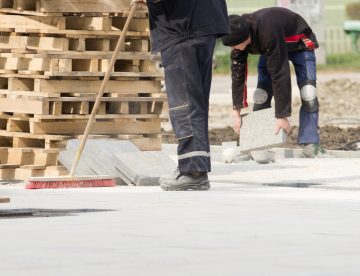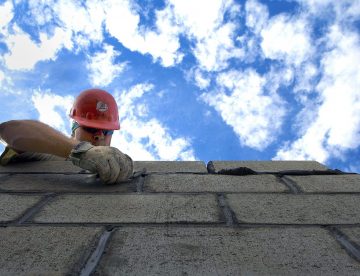
Since the coronavirus pandemic, we’ve all become very used to there being an enhanced focus on cleanliness and sanitisation – at home, while out and about and where we work. While this brought additional procedures and policies into play, even before COVID, most workplaces had some rules around maintaining a clean, tidy and well-organised environment. For construction, this is absolutely crucial in order to maintain site safety, prevent accidents or injuries and help to protect the environment.
Here at Sheriff Construction, we’ve made it clear that good housekeeping on site is everyone’s responsibility and there are key actions/ procedures that our site operatives should be undertaking on a continual basis. As a reminder, this week’s blog features the Sheriff guide to keeping things clean.

When the use of flat-roofing in construction hit its first wave of popularity (roughly from the 1950’s to 1970s), most of the properties that were built during that time offered little or no insulation. This approach, known as ‘cold roof’ construction, is now only rarely used as modern day property developments are far more likely to use ‘warm roofing’ methods which help to ensure rooms in the building are warmer in the winter and cooler in the summer, thereby reducing energy usage, bills and environmental impact.
In this week’s blog, we’re putting the spotlight on roofing insulation, its benefits and what’s changed between the older and newer generation systems.

This week, the UN Climate Change Conference known as COP26 opened in Glasgow, bringing representatives from around 200 countries into the Scottish city.
With so much ground to cover, the conference is due to last two weeks, closing on 12th November. One pledge that’s already been made by leaders of more than 100 countries is a commitment to end deforestation by 2030. As the days progress, no doubt we’ll see more headline pledges like this but meanwhile, we thought it might be helpful to summarise what COP26 is all about and what it potentially means for construction. Read on for your five-point guide.

Between July and September this year, the number of vacancies in construction soared to around 43,000 *. That’s double the amount of unfilled jobs the sector saw this time last year and the highest level ever recorded in the 20 years since the data was first collected back in 2001!
While this (alongside other issues like the rising costs of materials) might seem to be cause for concern as we head into the winter, some industry and recruitment experts believe things may be about to change. Find out more, including news of current vacancies at Sheriff, in this week’s blog.
